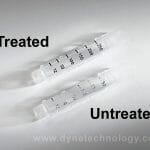Manufacturers who treat their metal detectors as a stand-alone unit could be missing a trick, writes Phil Brown, European Sales Director at Fortress Technology. The saying ‘no man is an island’ is equally applicable to machinery – particularly in a packaging line context – where machines rarely operate in isolation, and usually interface with up-or down-stream equipment. This is certainly true of metal detectors, which can easily be integrated with weighers, baggers and factory management systems, allowing users to reap the benefits that can be gleaned from a more joined-up approach to line design.
Integrating checkweighing and metal detection
Combined checkweighers and metal detectors are a familiar sight on production lines. The main reason these two operations are so frequently integrated has to do with the fact that the majority of FMCG products are packed to average weights legislation. Manufacturers that are packing to EC Average Weight regulations must also exclude metal rejects, and a dual weight and contaminant inspection point prevents this scenario from arising.
There are varying degrees of checkweigher-metal detector integration – from complete electronic and mechanical integration in which both functions are controlled via a single user interface – to an arrangement whereby the metal detector is connected to the checkweigher but both are independent systems. The advantage of the latter configuration is that if either unit breaks down, a replacement can easily be brought in with minimal disruption – a crucial consideration in high volume, round-the-clock production environments. On the other hand, from an operator point of view, controlling both functions through one HMI and having one data collection point is far simpler, plus a fully integrated system has a smaller footprint.
Bagging and detection
Bagging machines integrated with metal detectors are another – albeit less familiar – configuration. This is an approach most commonly adopted by larger FMCG manufacturers who integrate gravity style metal detectors into bagging equipment to give single screen set-up for both systems. This not only saves on space but also makes changeovers easy to facilitate with individual product and pack details held in the shared memory for fast call up. In some cases, the integrated system can also incorporate a multihead weigher. Aside from the single set up, the benefit of linking all three components is that they can ‘talk’ to one another; for example, transmitting a signal when metal is detected.
Seamless Integration
Several companies offer these integrated machine formats, yet some are more seamless than others. Fortress’ interface technology enables smooth and straightforward integration with equipment from other manufacturers with a software protocol for key entry and message display that can easily be shared between two or more machines. OEMs (original equipment manufacturers) can take as much or as little from the protocol as they choose – some might just want to access metal detector reject information whilst others might want to incorporate all of the metal detector’s functions into a system controlled by the checkweigher’s HMI.
Besides allowing Fortress’ metal detectors to be easily integrated with other pieces of packaging line equipment, this interface technology has enabled Fortress to develop some unique integrated systems of its own. The most recent example is a five lane multi-aperture, multi-lane system built for a food industry customer to overcome a speed and footprint challenge. Consolidating its multi-aperture technology into one ferrous only unit spanning five lanes, with five integrated checkweighers – as opposed to five individual combination systems – allowed Fortress to cut the equipment footprint by over 50 per cent whilst having a dedicated aperture for each lane improves the metal detection sensitivity by over 300 per cent.
Upgrading systems to meet food safety standards
One concern with buying an integrated system is what happens if one of the pieces of equipment within that system becomes outdated or obsolete – will that render the entire system useless?
Fortress’ ‘never obsolete’ promise assuages this very valid concern. Food safety standards set by the BRC (British Retail Consortium), the EFSIS (European Food Safety Inspection Service) and the major retailers can and do change. Revised standards can require extra fail-safes, alarms or new testing methods, for example. Some metal detectors are built in such a way that upgrades simply aren’t possible. Fortress, however, can make even a 15-year-old metal detector compatible with the latest retailer standard because all of its boards are designed to be electronically interchangeable. This approach means that rather than having to spend several thousands of pounds on a new metal detector and get used to a new interface, companies can simply spend a few hundred pounds on upgrading existing machines.
But despite the potential benefits for line efficiency, data collection and user-friendliness, very few FMCG manufacturers opt to integrate metal detectors with their production environment. Fortress estimates that less than 10% of companies network their metal detectors into a factory management system and 85% of companies simply treat their metal detectors as stand-alone systems at the end of the production line. This is partly because there is no requirement within the food safety standards that calls for integration. Traceability data, for example, tends to be collected manually by QA personnel, even though Fortress’ systems are supplied with software that allows users to collect traceability data electronically on a USB stick.
Looking to the future, Fortress predicts that this will change, and that more companies will embrace the electronic integration of metal detectors, as web-based technologies evolve and advance. Soon, adding a metal detector to a factory network will be as easy as adding a printer to an office PC network, and users will be able to look at the performance of any metal detector via an app.
Historically, this degree of integration has been less cost effective as internal networks and company IT systems were hardware driven and based on bespoke software protocols. Software varied from site to site and company to company. Going forwards, there will no longer be a need for specific electrical wiring and protocols, as all devices will use universal internet web technology. And in this new era of connectivity, treating metal detectors as isolated ‘islands’ will become the exception rather than the rule.








